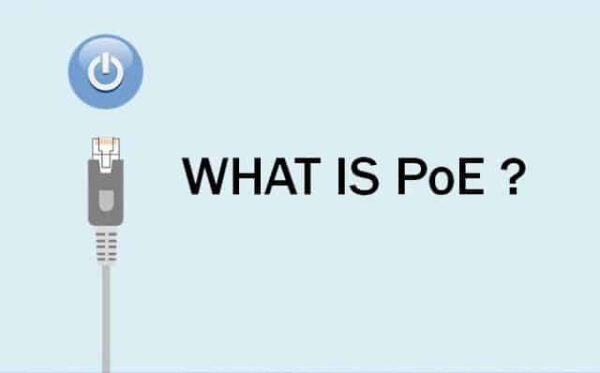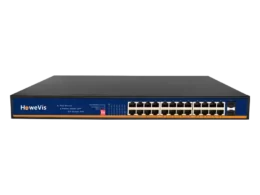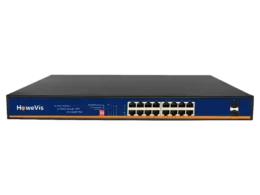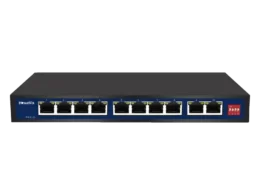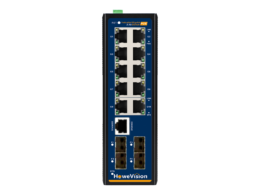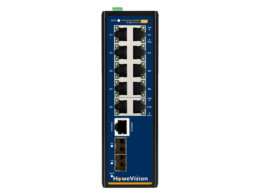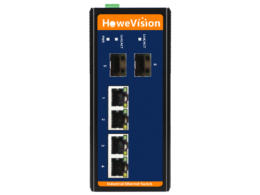PoE stands for Power over Ethernet. PoE is a technology that provides power and data to the devices at the same time.
For Example, A stand-alone Wireless Access Point needs two cables.
One will supply the power to run.
And the other to allow the flow of data for communication.
Two separate connections will enable the Wireless Access Point to function fully. For this very particular reason, the Power over Ethernet is invented. It fulfills the need for both connections single-handedly.
Power over Ethernet is a system that performs two tasks simultaneously. It allows the flow of electricity along with the data on the twisted pair Ethernet cable. The mentioned reason enables one cable to prove the Power and the flow of data to different devices such as Internet Protocol Cameras, Voice over Internet Protocol Phones and Wireless Access Phones, RFID readers, and Bluetooth AP.
Main Components of Power over Ethernet
There are two primary components of Power over Ethernet. The Powered device(PD) and the power sourcing equipment(PSE). The PSE side is to deliver power and network data to the PD side, and the PD side is to receive power and network data from the PSE. The twisted-pair Ethernet cable is also the main component because it allows data transmission and lowers Power simultaneously.
How Power over Ethernet works
There are several techniques to transfer the Power over Ethernet.
These are defined through the IEEE standards. Under these standards, many things are defined, such as how much maximum Power should be transferred over these Ethernet cables, the length of the Ethernet cable over which we can safely transfer the data, and the maximum voltage or current applied over the Ethernet cables.
IEEE8O2.3.af (2003):
As mentioned earlier, there are two primary components; the PSE (Power Source Equipment) sources Power to the Ethernet cable. And PD (Powered Device) receives the Power over the Ethernet devices. Now before supplying the power to the network devices, we check that if the devices are PoE (Power over Ethernet) enabled or not. To prevent this, the PSE (Power Source Equipment) sends signals, in the form of voltage, to PD (Powered Device). In response to these signals, it receives this powered device’s signals, which is nothing but the resistance. Every powered device has some resistance, which is isolated from the main circuitry. When this process finishes and the powered device is eligible to receive Power from PSE (Power Source Equipment), the actual circuit will be exposed to this PSE (Power Source Equipment). The resistance that is detected ranges between 10-kilo ohms to 25-kilo ohms then this powered device can receive Power from this PSE (Power Source Equipment). If the resistance is less than 25-kilo ohms or more excellent than 33-kilo ohms, then PSE (Power Source Equipment) will not supply Power to this powered device. This procedure of detecting the resistance over the device is called resistive power discovery. This procedure comes under the standard of IEEE 802.3af (2003). This helps PSE to find out how much power the device requires. To find this, PSE applies a certain voltage to the device. In response in it receives the current that flows through the powered device. This whole procurable enables the PSE to detect how much Power it should supply to the powered device. Under the IEEE 802.3af (2003), a maximum of 15.4 W power can be provided, and the maximum power that the powered device can receive is 12.95 W. The received Power is always less than the Power supplied because some of the Power gets lost across the cable resistance.
The PoE is connected to the different devices. In case the network switch is PoE enabled, then the PSE (Power Source Equipment) is directly connected to the PD (Powered Device). But if the switch is not PoE enabled, then the other device is used to enable the device’s PoE capability. This device is called Midspan.
The wiring arrangement of the Ethernet is, that the Ethernet cable has a total of eight wires. Under the ten-base T and 100-base T networks, four wires in two twisted pairs are used to communicate the data, and the other four are spare. But for a 100-base T network, four pairs of twisted cables are used to communicate the data.
There are two ways to supply the Power through the Ethernet. These are Alternative A and Alternative B. In Alternative A, Power is provided over the pairs of cables that supply the data, but in Alternative B, the spare wires supply the Power. This technique is named the Phantom Power technique.
IEEE8O2.3.at (2009):
Under this standard, the maximum Power supplied by PSE (Power Source Equipment) is 30 W, and the maximum Power received by PD (Powered Device) is 25.5 W.
IEEE8O2.3.bt (2009):
Under this standard, the maximum Power supplied by PSE (Power Source Equipment) is 100 W. Because in this standard, the four pairs of cables supply the current along with the data.
Use of PoE
There are mainly three devices that are the target market of the PoE:
- Voice over Internet protocol phones: The use of Power over Ethernet means only one cable is plugged into the phones and the socket. It allows the remote use of the phone. Both the data and the electricity flow over this. This is the main application of Power over Ethernet.
- Wireless access point: Wireless AP with POE power can be in a small range of independent networking applications, which is equivalent to the router has ability to the independent tube. Simple networking mode, easy-to-adjust management, and low cost.
- Internet protocol cameras: The Internet protocol cameras use Power over Ethernet because it allows them flexible positions. And it will enable them to switch places easily.
The other uses of Power over Ethernet are
- The small Point-of-sale kiosks. They display the information and advertisements.
- The PoE powers the small digital display as airports and malls display information on flights.
- Controllers, sensors, meters, and other industrial control systems, etc.
- The network time protocol using wall clocks uses the Power over Ethernet.
- The network routers also use the Power over Ethernet.
PoE Advantages
- Cost: PoE saves the user from the installation costs as it does not need an electrician to install. It also saves the cost of electricity consumption. The cost in comparison to optical fiber is also low.
- Time: Power over Ethernet saves the time that goes into setting it up as it does not require a professional electrician. Anyone can install it. Power over Ethernet can be placed according to the choice of the customer.
- Reliable: The Power over Ethernet is a part of the whole system backed up by Power’s undisturbed supply.
- Secured: The Power over Ethernet saves the device from incorrect installation, overload of the data or Power, and under Power.
- Ease of use: The availability of Power on the devices makes it easy, quick, and efficient to operate and dissipate the information.
- FLEXIBLE: The Power over Ethernet allows the placement of the devices to remote locations. Because these devices then do not need the cable of Power. Therefore, this allows flexible repositioning of the devices.
- There are no extra wires used for Power.
Applications of Power over Ethernet
- Security cameras: Power over Ethernet is used for the configuration of security or spy cameras. These cameras operate on Power and at the same time record the data. The process requires a separate supply of Power, a different cable for that, and a separate line for data. But with the use of Power over Ethernet, a single cable does both tasks. Another key benefit is that these cameras need to be in a remote location and are subject to frequent changes of position; the absence of a power cable enables them to carry out this function efficiently.
- RFIDS and alarm: The alarm systems use Power over the Ethernet, and the RFID readers also use Power over Ethernet.
- Lightning systems: Power over Ethernet enables the control of the lighting system from one place, remote from the lights’ actual site. The LEDs use the PoE.
- Smart homes: Smart homes have the devices’ connections and data flow over the entire house. The Power over Ethernet backs up this system of smart homes.
Drawbacks:
There are some limitations to the PoE as well.
Although it is one of the advantages of when four or five of them are purchased, the installation cost is one of the advantages. But if one or two are purchased, it can be expensive to install and maintain the Power over Ethernet. The other drawback can be the complexities of understanding and making it work for the whole system.

